The Science Of Beauty: Understanding Neuroaesthetics And The Human Experience With Dr. Anjan Chatterjee
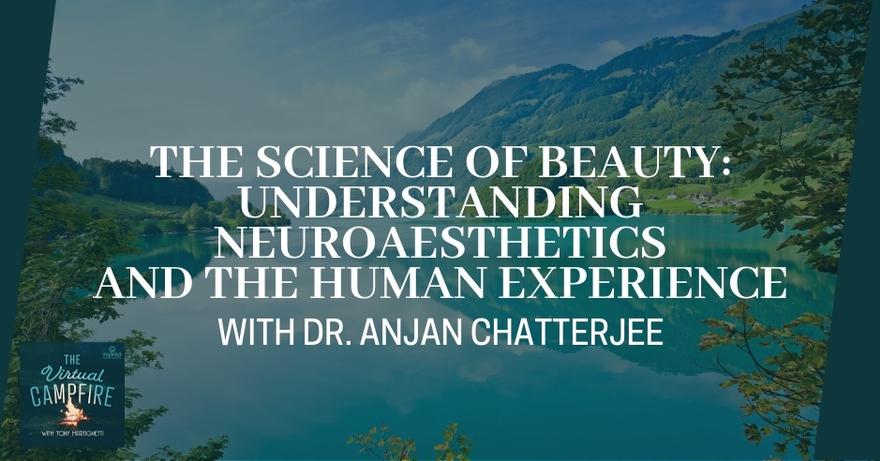
Neuroaesthetics unlocks the science behind why beauty, art, and design move us, shaping our emotions and everyday experiences. Dr. Anjan Chatterjee, founding director of the Penn Center for Neuroaesthetics, takes us through the pivotal moments that shaped his career and the birth of this groundbreaking field, from the rise of fMRI to the leap of faith that led to creating a center dedicated to aesthetics and the brain. He breaks down how people, places, and things influence our sense of joy, wonder, and meaning, and explores the role of neuroaesthetics in everything from art and architecture to healthcare and technology.
---
Listen to the podcast here
The Science Of Beauty: Understanding Neuroaesthetics And The Human Experience With Dr. Anjan Chatterjee
It is truly my honor to introduce you to my guest, Anjan Chatterjee. Anjan is the Founding Director of the Penn Center for Neuroaesthetics. He wrote The Aesthetic Brain: How We Evolved to Desire Beauty and Enjoy Art, and he has co-edited Neuroethics in Practice: Medicine, Mind, and Society and The Roots of Cognitive Neuroscience: Behavioral Neurology and Neuropsychology, and Brain, Beauty, and Art: Essays Bringing Neuroaesthetics into Focus.
He has received the Norman Geschwind Prize in Behavioral and Cognitive Neurology and the Rudolph Arnheim Prize for his contributions to Psychology and the Arts. He has been on the editorial board of several journals focused on neuroscience, neurology, ethics, and aesthetics. He's a founding member of the Board of Governors of the Neuroethics Society, the past president of the International Association of Empirical Aesthetics, and the past president of the Behavioral and Cognitive Neurology Society. Anjan, it is truly an honor to welcome you to The Virtual Campfire.
It’s a pleasure to be here. Thank you for inviting me.
I want to start by saying that I've been a huge fan of your work and your thought leadership. From the moment I read The Aesthetic Brain, it has caught my attention that there's a lot more to see than what we've been looking at. Thank you so much for all that you do.
I appreciate your kind words.
The Flashpoints Of A Career: From Philosophy To Neuroscience
In this episode, I get the opportunity to explore what got you into this work and what's lighting you up these days. We're going to do this exploration through what I call flashpoints. Flashpoints are the points in your journey that have ignited your gifts into the world. I'm going to turn over to you in a moment, and you can start wherever you like. Share what you are called to share. We'll pause along the way and see what themes are showing up. How does that sound?
Sounds good.
Wonderful. Anjan, take it away.
There are so many flashpoints when you've lived a little while. I'm 66 right now, and you look back at the different points or pivot points, where things could have turned out very differently. To start, my undergraduate degree was in philosophy. I was always interested in how the mind worked. The choice for me was to go to Philosophy graduate school or to go to Medical school. Ultimately, I chose to go to Medical school. At the time, I thought I would become a general practitioner working in primary care. That did not happen.
One flashpoint is that Ronald Reagan was elected as president in 1980. He had a profound influence on my career because what he did was eliminate a program that I expected to participate in. There was a National Health Service, which would pay for your medical school, and then for four years, you would commit to work typically in either a very rural or very urban area. My plan was to work in very urban areas, but the program was eliminated. You're not to get loans. I get money from my parents to go to med school. It also meant that the future was unknown at that point. My carefully orchestrated plan no longer applied.
I then discovered neuroscience in the early ‘80s. At the time, in the ‘70s, neuroscience was not something that was taught in college. As I was reading that, I realized that this was a field that could address the kinds of questions I had been interested in as an undergraduate, the nature of our mind. Rather than approaching this philosophically, one could view this through the lens of neuroscience. That put me in that direction.
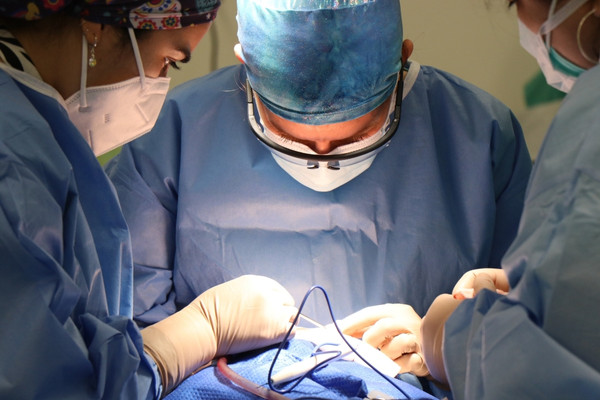
I started out by being trained as a cognitive neurologist. The early part of my career was trying to understand, from the way that people behave, the phenomenology of patients after they have had brain damage. What is that? What does that tell us about how our mind is organized and how different parts of the brain orchestrate the behavior? It's a reverse engineering problem. I would say something has gone wrong, but things go wrong in principled ways. It's not a chaotic thing.
In the early days, I was quite interested in questions of consciousness. I was interested in attention, language, and so on. I did that for quite some time, and that continued for a long time. A second pivot point would have been in the late ‘90s, around ‘98 to ‘99. I was on the faculty at the University of Alabama and Birmingham. Around that time, cognitive neuroscience was just starting to emerge. In part, it was because of technology. Imaging modalities started to become more popular, most importantly, functional magnetic resonance imaging or fMRI, which allowed people to get a glimpse into what was happening inside people's brains at the time that they were thinking certain thoughts or doing certain tasks.
The 10-Year Horizon: A Pivotal Question For Aesthetics Research
Several universities around the country started to develop these kinds of centers. The University of Pennsylvania, where I had been a medical student, was also starting a center for cognitive neuroscience. I was recruited for that. The pivot point has two parts to it, which is that in Birmingham, I had a couple of friends with whom I would meet. Most Fridays, we'd meet and get together at a bar, talk about work, talk about life, and so on. They are both good friends and collaborators, but the fact that I was going to be leaving meant this club was not going to continue.
One of them asked a hypothetical question, which was to imagine yourself ten years into the future. I would recommend this question to your audience because it has been extremely useful for me. Imagine yourself ten years into the future, and you look back and consider what you would regret if you had not done it. At the time, I thought I had always been interested in aesthetics. It seemed like an important feature of our humanity and of what our minds do. If I didn't study it in any formal way, I would regret it.
Imagine yourself ten years from now. Look back and consider what you would regret not having done.
At that time, from ‘98 to ’99, there was virtually nothing written about this from the lens of neuroscience. I moved to Penn. It was a time to rethink and reevaluate what I was doing. New place, new setup. The nice thing about a ten-year horizon is that you don't have to do anything quickly. You can incrementally move in a direction and continue what you're doing, which is what happened.
I found that there was an organization called The International Association of Empirical Aesthetics. They were next meeting in Japan, outside of Osaka, in a design institute called Takarazuka. I decided to go there. I met a group of people who were mostly psychologists, some art historians, some philosophers, and one other neuroscientist. Importantly, it was a community of people who were interested in approaching aesthetics empirically. They were a very nice group of people and were a smaller organization, but that gave me a home. Ten years later, I was the president of that organization. I was involved in that, and a few other people whom I met. Some are a few years younger than me, but over the last 20 to 25 years, they have been developing and promoting neuroaesthetics as a group.
Another pivot point would be around 2018, when I started the center that you referred to in the introduction, the Penn Center for Neuroaesthetics. That’s a pivot point insofar as it meant that this is now a main thing that I was working on, as opposed to the early art, which was always on the side of other research. Now, it has become a focus. There is a promise and a peril to it. The promise is that I get to do something I really want to and feel committed to. The peril is that it's a huge risk.
I was the chair of the Neurology Department at Pennsylvania Hospital, which is the oldest hospital in the country. It was started by Ben Franklin and Thomas Bond in 1751. That was a cool position to be in, with financial security, but I gave that up to start the center. Also, up until that point, for 25 years, I had funding from the National Institutes of Health and the National Science Foundation, but aesthetics does not lend itself to funding, even though the expenses are the same. It was another leap of faith. A lot of the business model switched to thinking about both foundations and philanthropy. It has always been dicey. Especially now in 2025, both the sciences and the arts in the US are under assault. Those anxieties are magnified now. In some ways, I would say it's the best of times and the worst of times.

Bold Questions, Unexpected Trajectories: The Role Of Serendipity In Success
I want to pause for a moment to say, “Wow.” You shared a lot, and there are a lot of things about what you shared, which is to say that bold questions. They can start you on a very different trajectory than you might have expected, and also create the path to something very different than what society can create for us. Oftentimes, people think of aesthetics, and they say, “That's nice,” but what is the importance of all that?
The reality is that it takes committed individuals to look at something and to go deep into it to understand how this impacts us, and how it touches so much of everything we do, especially in light of the technology. Not only has it helped to advance the study of aesthetics, but it has also impacted how we relate to the world around us. There's something about this bold move and bold question that has set off a trajectory you would have probably never expected. Would you agree?
Yeah, I think so. When I talked to students, sometimes I said that there is nothing you can do to guarantee your success. There is a lot you can do to guarantee your failure. What that means is you've got to work hard. You've got to put in the powers. You've got to develop your expertise. You have to think deeply, and you have to be lucky. Anybody who, on the surface, seems successful and doesn't acknowledge the role that luck plays is either lying to other people or lying to themselves. Serendipity is an amazing thing.
You can't guarantee success, but you can guarantee failure.
Having said that, I think you have to do all the other things and be committed to what you're doing, but also be adaptable to change. There's a certain agility that's required to do this over a long period of time. Most of us tend to get fairly stereotypical in our ways, maybe a little more rigid as we get older. My solution for that is to be around young people. They help you help me to stay agile. They asked the questions. There's a beginner's mind when people are asking questions, and we think we know the answer to that, but we don't, for example,
The Power Of The Question: Driving Research And Discovery
Beautifully said. That's the optimistic view we need to embrace. We need each other. We need other generations. We need to be in community with others, so that we don't become myopic in our views. We allow ourselves to say, “What else could I be missing? How can I also be leaning into the things that could be wrong about my theories?” That's also one of the wonderful things about writing books. We'll talk about your books, of course, but you start not with the answers, but sometimes with just a question, and then it becomes clearer as you start to write. Would you agree?
I certainly would. I would say that's true for research in general. One of the mantras in my lab is “The question is the question.” We spent a fair amount of time thinking through what question we want to ask before jumping into design and experiment, or collecting data. The idea is that we all have limited time, limited effort, and limited resources. We want to ask the right question. Every move in a certain direction means that there are other directions you're not going into. Spending that upfront time is always worth it rather than jumping right into something.
Neuroaesthetics 101: Why Aesthetic Experiences Truly Matter
I agree. I want to get back into some elements of aesthetics around neuroaesthetics, particularly. What do people need to know about this particular aspect of the study? How does it affect them day in and day out in ways that they don't know? I know probably a bit more than most because I've read a lot. It's something that fascinates me, but I want to give this almost a 101 for the folks who don't know very much about this topic, if you're okay with that.
Absolutely. The question of why aesthetic experiences matter comes up all the time. There is a kind of view, especially in America, that aesthetics are frivolous. It's a nice-to-have, but it's not a need-to-have. If you're wealthy or the bougie class, you can go to the museum or go to the opera, and that's all well and good. My response to that is to imagine. The intuition is almost clear if you imagine this in the negative. What I mean by that is imagine a world in which you have no aesthetic experiences.
Let's say all your basic needs are met. You get up in the morning and you put on your clothes. There's no sense of fashion. There's nothing individuated. You're kept warm. Your home protects you from the elements, and it's got good heating or cooling, depending on your climate, but it's a concrete box. You heat your food. It provides you with adequate nutrition, but there's no flavor. There's nothing enjoyable about it, and you go down the line every step in your life. You're walking down the street, and there's nothing appealing to look at in the street. You're just going from point A to point B.
Is that a life in which all your basic needs are being met? Is that a life you would want to live? For most people, the answer is, “No. That would be terrible.” It gives people an intuition in their own lives. I'm not saying what you should like or what your aesthetic experience should be. You might be a foodie and love food, and someone else might love music and couldn't care less about food. It doesn't matter. That part doesn't matter. What matters is that people have aesthetic experiences. I think what comes with that is a series of emotional states that can be aspects of joy, wonder, awe, and delight. It gives our lives a texture and a meaning that we otherwise wouldn't have.
What matters is that people have an aesthetic experience, and with that comes emotional states—joy, wonder, delight—that give our lives a texture and meaning we otherwise wouldn't have.
That's the big picture of why I think aesthetics matter. Now, we can drill down to it a little more. One of the ways we think about aesthetics is using the way our brain carves out the world into people, places, and things. We studied the aesthetics of people. What do people look like? Why do we find some people beautiful? What are the consequences of that? With places, it's both our relationship to nature and the built environment. How does that have an impact on us? With things, it could be everyday objects. It could be consumer objects that we engage with all the time. Maybe you have a favorite coffee cup or bowl that gives you delight every time you eat out of it.
Also, art. For us, in some ways, art presents a deep mystery because it's not clear why we should care about paint or watercolor on a canvas. We're not eating it or we're not having sex with it, and yet people will spend a lot of time with it. You take each of those domains, depending on how much you want to drill down into it with people, clearly make choices, for example, on our mates, at least, to some extent, on what they look like, and how we interact with each other.
One of the things we are quite interested in is a rather unfortunate conflation of moral and aesthetic values. There is something called the beauty is good stereotype, or that attractive people are given all sorts of benefits. We are finding that having a facial anomaly is a bad stereotype, which is that when people have scars or developmental abnormalities, other people, without necessarily realizing it, think that they are less intelligent, less competent, less trustworthy, and so on. We think culture plays a big role in this, that this is a common trope in movies that you want to show a villain, you show them with a scar, so everybody is supposed to know that’s a bad person. There's that domain.
With the built environment, the case has become easier since the pandemic. When people were in lockdown, people became more explicitly aware of their built environment and where they were stuck, and how that made them feel. Our view is that most of us in the materially developed world spend 90.95% of our time indoors. This has a big effect on our well-being, even though we don't necessarily realize it explicitly. So much of our work has been trying to understand the factors that contribute to that, and how you can understand what's going on there, and how you can use that knowledge to inform how you change your environment to help you.

With art, art is a funny thing because it is potentially so powerful. I'm not one of these people who think that art is an unmitigated good. I think it's a powerful tool that can be used for good. It can be used for nefarious purposes. It can be used to manipulate people. It can be used to misrepresent information. Having said that, it has the possibility of deeply affecting people and transforming them. For us, the scientific question is under what conditions, what kind of people, and what is the nature of that transformation if it occurs. Each of these three domains takes us in different directions, but those are the kinds of questions that we try to pursue, and then it's rolling up your sleeves and getting down to work. Like designing experiments, everything is always mental conclusions, provisional, and so on and so forth.
Intentional Living & The Ethics Of Influence: Neuroaesthetics In The Modern World
There's something about what you're sharing that has me thinking about how the awareness of neuroaesthetics for an individual helps you think, “How am I being intentional about what's happening in my world?” Also, for the multitude of industries and people who are influencing others, as you said, there's a moral element of this that comes into play, and how they are using it to manipulate others. That has shown up, whether we know it or not, in the way that algorithms are created to get people to be sucked into an app, or to a social media feed. At least, maybe in my humble opinion, that's neuroaesthetics and its own way. Would you agree?
I had a post on LinkedIn saying, “We need to put the neuro back into neuroaesthetics. It’s just a metaphor. If you say, “The psychology of aesthetics,” people don't like that because people are mistrustful of psychology, so you put “neuro” in and they think it's real.
That's science.
Here's an example, we know something about addiction and the way in which, when people receive rewards and are given pleasure on an unpredictable schedule. You're doing something, you get a reward, and next time you do it, you don't get a reward, then you do it again. Maybe 70% of the time, when you do something, you get a reward, but you can't predict which 70% of the time it is. That's the way in which people get addicted because they still want to get that reward, but they can't predict when it's going to happen, so they keep doing it.
That's a finding from neuroscience. We know something about the neurochemistry behind that. When app makers, who are very good at this, are capitalizing on that reinforcement schedule, not to get people addicted. Is that neuroaesthetics? It's using neuroinformation, but I think in the app itself, it's sort of secondarily engaging with our brains in that way, but you engage with it. I do worry a little bit about the marketing of the term neuroaesthetics because anybody you are interacting with, you are interacting with their brain.
That's true.
At that point had become so rapid. It's like saying, “I'm talking to you. We're enjoying this conversation. This is a neuroaesthetic experience.”
The Creative Process: Writing Books As A Journey Of Discovery
I hear you. The ground-level neuroaesthetics is happening everywhere at all times, but we can't point the finger and say that all these things are happening because of that. It's just a part of the interaction, or the experience that we're having. Look at me throwing this neuroscience out here. Let's get back to the story. There's a flashpoint that you want to share because I know we shared a lot of the journey. As you got into this work, were there elements of this, especially the book writing process, that you were challenged with or that you felt like, “This is the thing that I'm going to be doing next?”
The book-writing process is interesting in the sense that when I started, I didn't know where I was going to end up. We have the whole thing carved out. For me, there's a Mark Twain quote that goes something along these lines. I'm going to butcher it exactly, but something along the lines of “How do I know what I'm thinking until I see what I'm saying?” The writing is part of that. It is partly to discover what I think about a topic. Where I ended up was not something I anticipated from where I started. I'm in the midst of working on another book proposal. Hopefully, it'll be something similar.
You were talking about algorithms. There's almost a way in which I think now, for non-fiction science, non-fiction that's written for a general audience, I almost get the sense that there's an algorithm now, where publishers and agents want a very specific kind of writing that's highly personal, where you have the narrative trajectory worked out, and the ideas are clear and relatively simple. That's what they want.
It's unfortunate that there is a flattening and a simplifying of science writing for the general public in a way that either correctly or incorrectly, but my own sense is incorrectly, doesn't give the reader enough credit to say they are willing to put in a little bit of work. If you do it well, you can take them to a level that’s deeper than a two-line summary of a book.
It's unfortunate that there's a kind of flattening and simplifying of science writing for the general public.
That's an interesting insight because when you think back to some of the best science non-fiction over the years, some of them are massive tombs that you read them and you're like, “Wow. I am transformed through that. I now see things differently, and it has me wanting to do more in-depth work because I read that.” A lot of these books aren't coming to mind right now, but I can think of some of the physics books that I read early days that were amazing.
Anyway, it’s off-topic, but I love your point. Sometimes we have to challenge that because in a world where everyone is converging into a place where everything sounds and feels the same, maybe we need to stop that and start to think, “Where can we do things a little bit differently, so that we can not just stand out for the sake of standing out, but challenge the conventions?”
I couldn't agree more. I think you give the readers and the curious public a little credit. Give them a little respect.
I can't wait to see what happens next for your next book. It's going to be fun. You've been editing a ton of books. Tell me about that process. When you're seen as the editor, are you challenging the ideas that other people are putting into the world? Are they looking to you to validate? Tell me more about this process because three books to be a co-editor on is a lot.
All three of the books have a different design and a different intent. The book The Roots of Cognitive Neuroscience was, in some ways, a homage to the person who trained me, a guy named Ken Heilman, who unfortunately died in 2024. He's about 20 years older than me. He was one of these incredibly energetic and creative people. He trained a whole group of scientists around the world, mostly neurologists.
That book was to say that as imaging was becoming more and more popular, and for many people, it became sine qua non for cognitive neuroscience, there's this whole body of work where I started off, about what happens to people when they have brain damage and how this affects their thinking. That gives us tremendous insight into how the brain works, and people were forgetting that. That's the roots of cognitive neuroscience. It goes back to the end of the 19th century.
What we did was we took different topics, whether it's reading, face perception, and so on. We reviewed what we know about the neuropsychology. Every chapter was written by someone he had trained. That was the inception of that book. It’s to honor this person, but also to remind people that a lot of what we know about the brain still comes from the study of patients. With the new technology, much of it is confirming that, but there's this wealth of information.
A lot of what we know about the brain still comes from studying patients; new technology largely confirms that.
The Neuroethics book was at a time when neuroethics was starting to cohere as a field, and there were all these different things going on. I had worked a fair amount on the ethics of enhancement using drugs that we use for patients, but also in normal people. There was an issue about machine-brain interfaces. It’s a variety of these topics that were all coming together. We thought it would be good to bring all these threads together in one book. It was at a time when I thought it was needed. That also worked quite well because it gave people who were starting to get interested in neuroethics, people who were coming in, young students, or new people from other fields.
Often, these fields are populated by people who start out somewhere else. You've been doing something for the last fifteen years, and you decide, “I need to know something about the ethics of neuroscience.” It gives you an entry point, a book like that, before you sit down and start reading all sorts of primary papers. It lays out the geography of the field at that point.
The Brain, Beauty, and Art book had a different intent. That was a fun book to edit because neuroaesthetics is a young enough field that probably began in the century. You can see traces of it before then, but it's a pretty young field. What we did was to look back at the last 25 years and say, “What are the seminal peer-reviewed papers out over the last 25 years?” Starting in the late ‘90s, the subtitle of the book was published in ‘21 or ‘22. Up until that point, what did we think were the key papers?
 We contacted the first author and the senior author and asked them to write an essay in which they answered three questions. The first was, what were you thinking when you either designed the experiment or if there's a theoretical paper that led you to wanting to make this claim? What did you actually find or say? Put your claims whenever that was in the context of where you think neuroaesthetics is now.” If it does not, you modify, so on and so forth.
We contacted the first author and the senior author and asked them to write an essay in which they answered three questions. The first was, what were you thinking when you either designed the experiment or if there's a theoretical paper that led you to wanting to make this claim? What did you actually find or say? Put your claims whenever that was in the context of where you think neuroaesthetics is now.” If it does not, you modify, so on and so forth.
Most people like to write about themselves. Their essay is about their own paper. We thought that this would be a good way for other people to get a short history of this young field at a point where you can still have a historical overview, but also a cross-section of the evolution of thinking in this field by the people who are actively working in neuroaesthetics. With the exception of two people, everybody accepted doing that.
Also, in that book, more than the others, we were activist editors. We told them we were going to be that because they can be quite varied in how well they write for the general public. We spent a lot of work on editing people's writings, and almost everybody was pretty good-natured about it. All three books had different intents as they were being conceptualized.
The Future Of Neuroaesthetics: Innovation, Application, And AI
It's quite a body of work to put out there. When I think about the grand scheme of all that this is doing, it's putting a foundation that puts us in a good place where we're headed. That's where my next question is coming from. In your mind, what does the future hold for this particular field? If you're willing to be as bold as to share your thoughts.
It's an exciting time. I'll go back to that promise and perils thing. The perils, at least in the US, are what the future of science is, more generally, and the future of the arts. That's not specific to this field. In the same way that tides raise all boats, they also lower all boats. That's more true here. Internationally, it's less true. For example, in Europe, there has always been more interest in aesthetics. It's built into the culture a little more than in America. In China, there's a tremendous interest in this field.
What is amazing to me is how much interest in the field there is from young people. I get easily 3, 4, or 5 emails a week from young people wanting to talk to me or wanting me to look at something. These are as young as people in eighth grade to retired professors from other places. I don't have the bandwidth, unfortunately. You want to give everybody. These are all sincere, genuine people. You want to give to them. You want to respect and honor their interest, but I don't have the time. This is from around the world. There’s a huge interest in this.
The future is bright in the sense that the next generations are keen to know why this is important, and they want to investigate it. The questions are becoming more interesting. We're past the initial phase. People are saying, “What's the panoply of emotions that we have in aesthetic experiences?” Not just beauty and pleasure, but you can have a little bit of things inside you. There can be that mixture of negative affect within the whole experience, and how that can actually make it more powerful. There are all these kinds of questions.
In the built environment, we've laid out some of the groundwork. Can this be applied in the real world? For example, we have one project that is happening in a substance use disorder facility in Maryland. The idea is that we can orchestrate the environment to help people reduce their stress. Can we do this for a particularly stressed population, which is people in recovery? We face the challenges of doing something. When we're in the laboratory, we have tremendous control. When you go out in the world, you have no control. How do you navigate between applying this in the real world, where we think it's important, but dealing with the fact that you don't have the same rigor that you can have in the laboratory?
We're doing work, for example, in Philadelphia. In the city I'm in, there are more than 4,000 murals around the city. It’s in every kind of neighborhood. Poor or rich, it doesn't matter. There are murals. We've been looking at the effect of murals by doing fieldwork, having people out there, and doing our experiments. It means that you also can't completely control what their experience is. A street person might come up to them, especially if they have unregulated mental health issues, start talking to them, or start screaming at them. That overwhelms the whole experience. It's the world, right?
Yes. There are a lot of factors.
Going back to your question of what's ahead, more and more people are trying to understand how some of this can be applied in the real world. The other side of that is what technology can do. Can this amplify some of the work we're doing? We are also designing some of this work in virtual reality settings, especially issues around the build environment. Can we recreate those environments that we have in the substance use disorder facility in VR, so that we can then do more controlled experiments? That can be in between that.
More and more, people are trying to understand how some of this can be applied in the real world.
The last thing is that, at this point, you can't walk 10 yards without bumping into AI and machine learning. We are also trying to figure out whether there’s a way in which these machine learning algorithms can give us some insight into the nature of aesthetic experiences that people are having. Those are all directions, and then it's spreading out into dance, literature, and poetry. The breadth and the depth are increasing as they should. Any field that starts to get past adolescence is where we are. At that point, it becomes much harder to predict. Who is the person who is 30, 35, or 40 and thinking outside the box, or the group of people who are going to take this in a direction that is beyond what I’m imagining right now?
Grounding Wisdom & Modern Tensions: Influential Books & Nature's Balance
That's exciting. That's the exciting part of all this. The fresh thinking will take this and move the needle. In the interest of time, I could talk to you for hours. I have one last question. What are one or two books that have had an impact on you and why?
It's such a hard question to answer. If you ask me this at a different time, I would probably have different responses. One book that I go back to and have over the years is Lao Tzu’s Tao Te Ching. I can just pick it up, and it's short. It's aphoristic. I can pick it up and open it to any page, and get something out of it. It's one of those grounding sources for me. It's probably almost 3,000 years old. It reminds you that the human condition remains the human condition.
At the other extreme, just because it's a book I'm reading right now, and deals with this tension that I am struggling with, the tension of the book I'm thinking of writing, but this articulates it in a different way. It's called The Wizard and the Prophet. It starts with two people in the 1930s, ‘40s, ‘50s, who have very different attitudes towards nature. What I like about the book is that there are no good guys and bad guys. Even though they have completely differing views. Both of these people became pivot points for whole movements. Although at the time, they didn't know that's what they were.
One is the conservationist. “We have limited resources in the world. We have to respect nature. We can't just suck everything that we want out of it.” The whole conservation movement comes out of this thinking. Those are the prophets. The prophets are saying, “We've got to be the stewards of our world.” The Wizards are the technocrats. They're saying, “We can do better. We see all of these people starving around the world. We have the science and technology to make heartier wheat and be more productive. We can get more out of what we already know.”
It starts with a person who grew up far up in Iowa, where, shortly after the Dust Bowl, people were seeing how farming changed once tractors came in, the massive increase in production of food, and then, in Minneapolis, he saw rioting of these starving people who lost it and started rioting. There's this idea that there are these technical and scientific things we can do to maximize production for people who need this stuff.
There was this tension whether we can improve upon nature based on our science for the purposes of doing good in the world, versus the whole project is misguided because, ultimately, there's a limited amount of resources. That tension is something I've been thinking about. This articulates it in a very different way than I think about it, but that tension is one that we all face, which is what is our relationship to nature. I'm reading that right now. That's why.
It's a timeless tension point when you think about it. It's like the crux of almost every big epic story. How do you balance between those two? I'm going to have to read this book, too. It sounds fascinating. Any inkling where you're going to be heading with this next book, then sign me up. To respect your time and come to a close, I want to start by saying thank you. This was amazing. I enjoyed all your insights and your stories. I'm so grateful that you came on the show.
I'm very glad that you invited me. It was a fun conversation.
Thank you so much. Before I let you go, one last thing. Let me know how people can find you if they want to reach out and learn more about you. Make sure they don't reach out to you and clog your email. I know you already get that, but if they want to learn more about your work and read your amazing stories, you have some great articles in Psychology Today, which I always read.
There are three places. In Psychology Today, I have a blog. Typically, we will have non-technical versions of our peer-reviewed papers. I've been more active on LinkedIn than in the past. A bunch of academics, once Twitter changed, have moved over to LinkedIn. I've been much more active there with commentaries and things. Bluesky, I am reasonably active there, but it has never quite reached, in my mind, at least from my purposes, the heyday of Twitter, but that's it. Those three. LinkedIn, my Psychology Today blog, and Bluesky.
Thanks again. Thanks to those who come on this journey. I know you've got a whole new perspective on how neuroaesthetics works and what it's all about. I hope you start to tune in to what's going on in your world from this angle. Thanks again.
Sure thing.
Important Links
- Anjan Chatterjee on Psychology Today
- Anjan Chatterjee on LinkedIn
- Anjan Chatterjee on Bluesky
- Penn Center for Neuroaesthetics
- The Aesthetic Brain: How We Evolved to Desire Beauty and Enjoy Art
- Neuroethics in Practice: Medicine, Mind, and Society
- The Roots of Cognitive Neuroscience: Behavioral Neurology and Neuropsychology
- Brain, Beauty, and Art: Essays Bringing Neuroaesthetics into Focus
- The International Association of Empirical Aesthetics
- Tao Te Ching
- The Wizard and the Prophet
Love the show? Subscribe, rate, review, and share! https://www.ipurposepartners.com/podcast
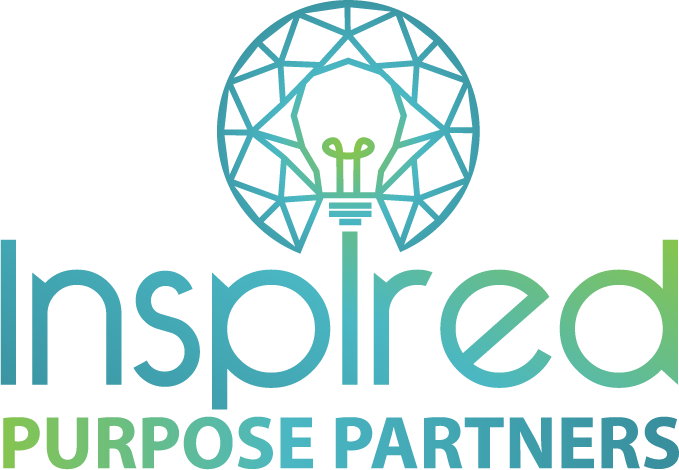

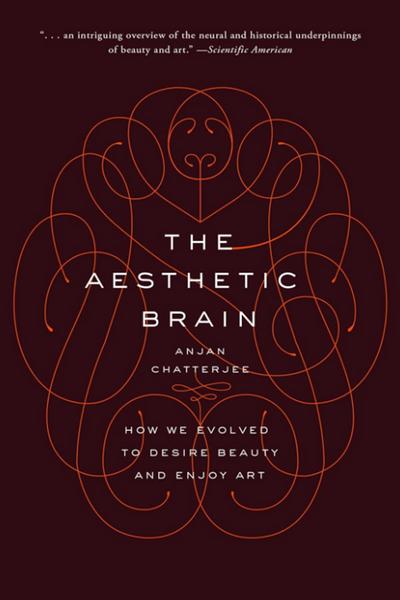
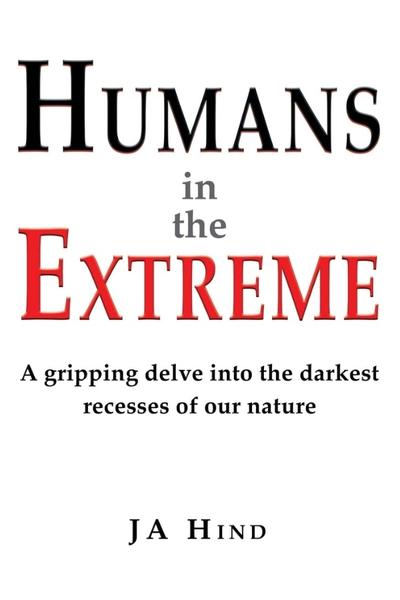
0 comments
Leave a comment
Please log in or register to post a comment